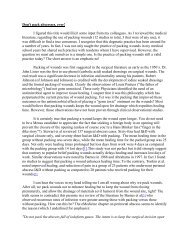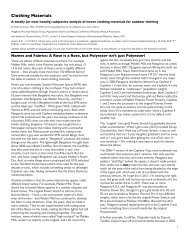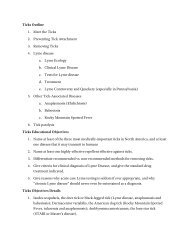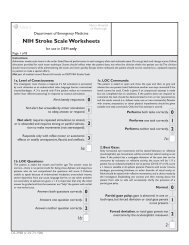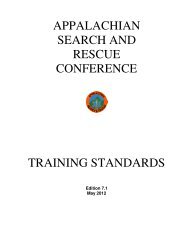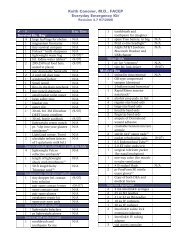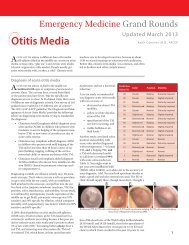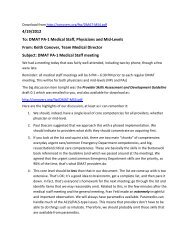pneumothorax BTS guidelines for the management of spontaneous
pneumothorax BTS guidelines for the management of spontaneous
pneumothorax BTS guidelines for the management of spontaneous
Create successful ePaper yourself
Turn your PDF publications into a flip-book with our unique Google optimized e-Paper software.
Downloaded from thorax.bmj.com on 17 August 2008<br />
ii46<br />
Henry, Arnold, Harvey<br />
contraindicated. RPO is probably caused by <strong>the</strong> increased permeability<br />
<strong>of</strong> capillaries damaged during a <strong>pneumothorax</strong>. This<br />
becomes manifest as oedema during re-expansion due to fur<strong>the</strong>r<br />
mechanical stresses applied to <strong>the</strong> already “leaky”<br />
capillaries. 94<br />
Clinically, <strong>the</strong>se patients manifest symptoms <strong>of</strong><br />
coughing and breathlessness or chest tightness after insertion<br />
<strong>of</strong> <strong>the</strong> chest tube. In those whose symptoms persist, a repeat<br />
chest radiograph after 24 hours will <strong>of</strong>ten show pulmonary<br />
oedema in <strong>the</strong> treated lung, although pulmonary oedema may<br />
also develop in <strong>the</strong> contralateral lung. 95 The incidence <strong>of</strong> RPO<br />
may be up to 14% and is higher in those with larger primary<br />
pneumothoraces and in younger patients (



